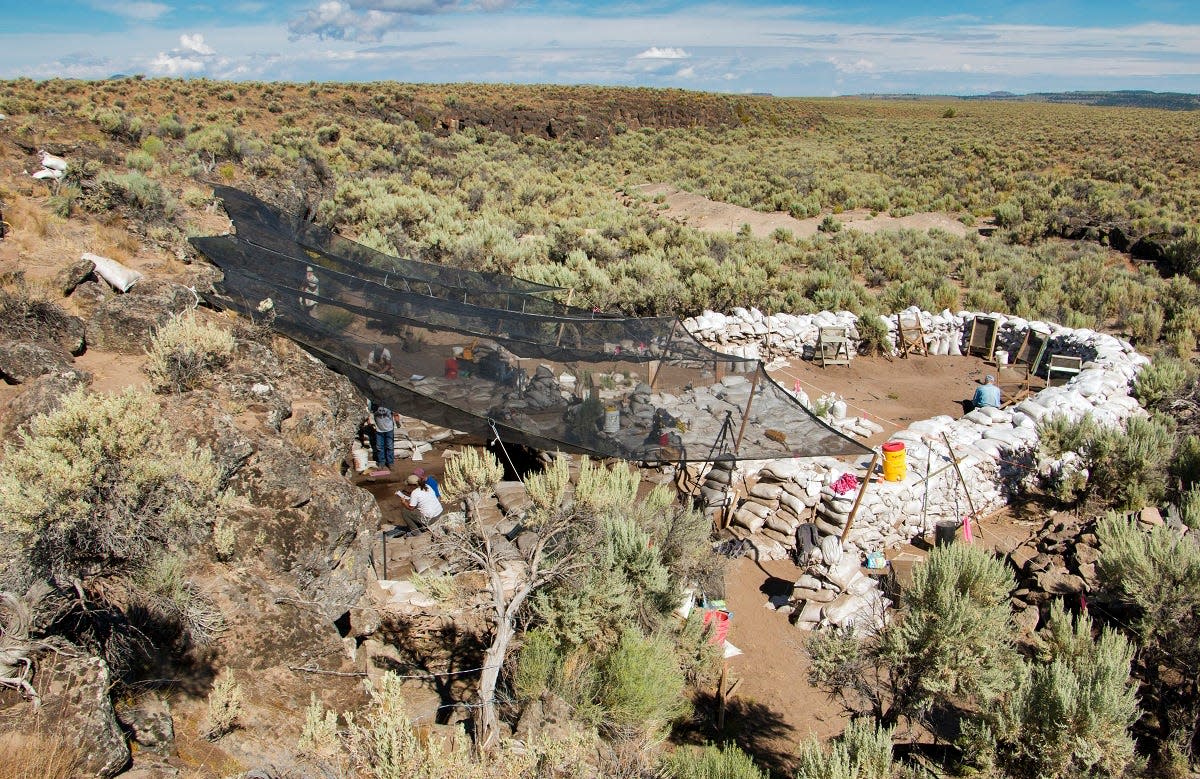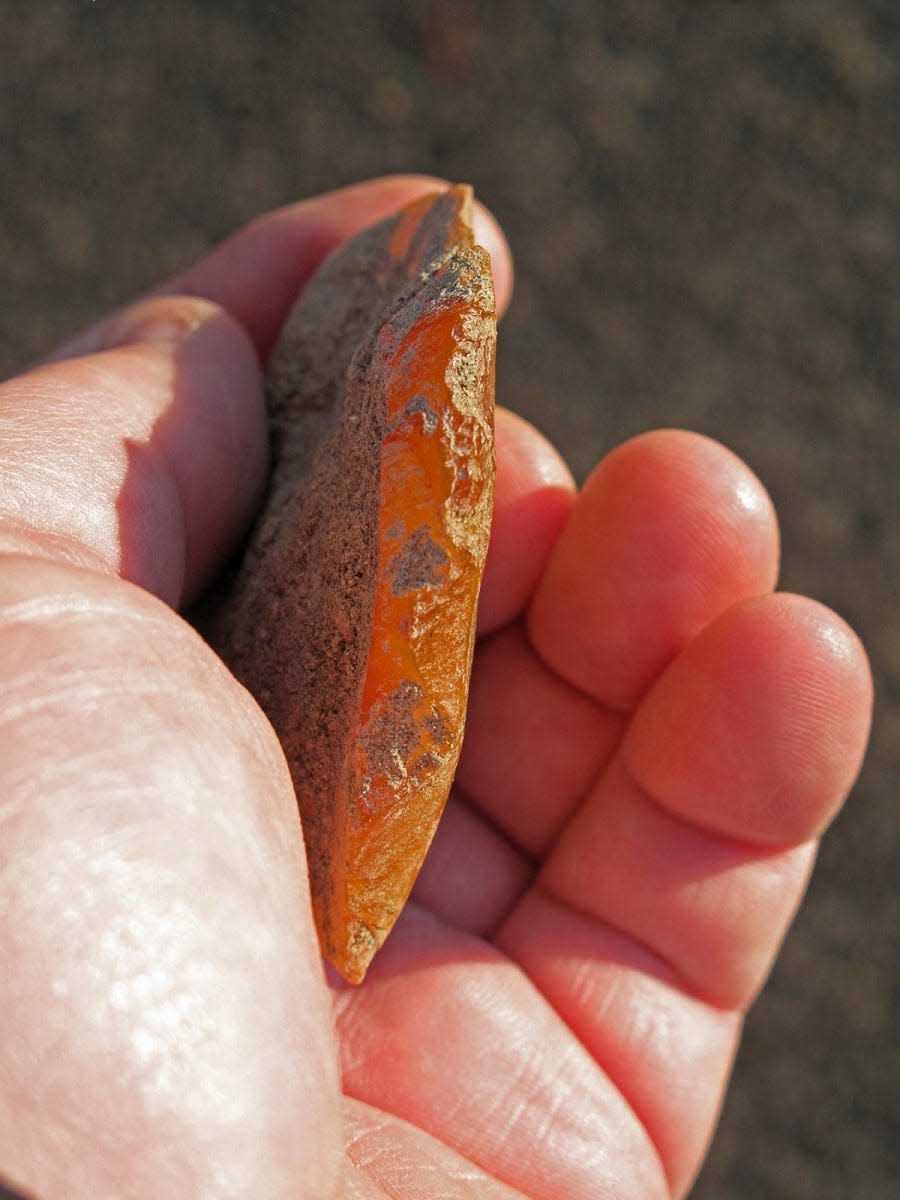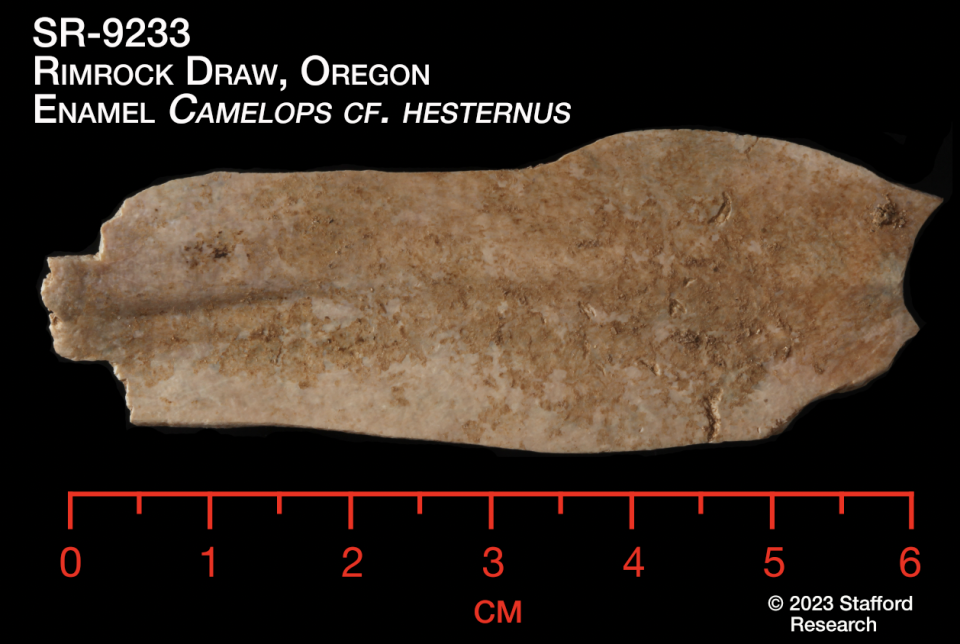Discovery: Oregon may be home to oldest human occupied site in North America

Archeologists have discovered evidence dating back more than 18,000 years ago that could mean Oregon is home to one of the oldest human occupied sites in North America.
The Rimrock Draw Rockshelter outside of Riley in Central Oregon has been home to excavation efforts since 2011.
“It's not so much that we have such old dates, but that we're getting consistent results,” archaeologist Patrick O’Grady, who led the excavation, said. “This site is beautiful in that sense because … for the past 11 years, we're actually seeing something that's preserved through time that dates from about 7,000 years back to 18,000 years. And that's magic.”
Camel teeth, orange agate scrapers discovered
Over the years, stone tools and tooth fragments from extinct mammals were found by the University of Oregon's Museum of Natural and Cultural History Archaeological Field School. The teams, led by O’Grady, have been excavating through an official partnership agreement with the Bureau of Land Management.
During the first year of the excavation, camel teeth fragments were discovered under a layer of volcanic ash from an eruption of Mount St. Helens that dated back to over 15,000 years ago.
Later, the teams also found two different handmade orange agate scrapers. The first was found in 2012 with bison blood residue still on the scraper, and the other was found in 2015.

Radiocarbon-dating analysis by Dr. Thomas W. Stafford on the tooth enamel revealed the mammal teeth are about 18,250 years old. Because the tools were found deeper in the ash, the layering of the sediments means the scrapers are older than the volcanic eruption and the camel teeth.
This means Rimrock Draw Rockshelter could be one of the oldest human occupation sites in North America.
“To me it's just a wonderful hunt,” Stafford said. “Now we're down to real excavations that are very controlled and good chemistry and good radiocarbon data. We're accumulating enough sites with good information that we can really say, ah, okay, it's a little bit older. It's a lot older.”
Radiocarbon is produced in the upper atmosphere. Anything that contains carbon, whether organic or inorganic, can be measured. From about 1950 to 1990, that process required grams of material. Now, scientists are able to use milligrams, which is about 1,000th less than what was needed before.
Which is where the enamel comes in. Two samples from about 2 inches of the enamel pieces returned the same age estimation.
"It's really encouraging to me," Stafford said.

BLM: Discoveries highlight importance of respecting archeological sites
A different archaeological site on BLM-managed public lands in western Idaho, Cooper’s Ferry, was previously thought to be the oldest known human occupation site in western North America. Teams had found evidence of human-occupied sites that date back more than 16,000 years.
BLM added those types of discoveries are also a good reminder of the importance of maintaining public lands by leaving archaeological sites alone, allowing for possibly more artifacts to be found in the future.
“We have been on the forefront of this, the study of this, since the early 20th century,” Lexie Briggs, with the University of Oregon Museum of Natural and Cultural History, said. “We are discovering how people have lived in Oregon for as long as there have been people in Oregon, and for that matter, North America.”
O’Grady and teams plan to return to the Rimrock Draw Rockshelter over the summer to work on other Ice Age animal remains and artifacts to support the 2012 findings.
“I always get a rush from that,” O’Grady said. “I benefited from going to the U of O field school back in 1994, and so to be able to participate in that and convey the experiences that I've had to these students is fulfilling.”
Abigail Landwehr is an outdoors journalism intern for the Statesman Journal. She can be reached at alandwehr@gannett.com
This article originally appeared on Salem Statesman Journal: Oregon may be home to oldest human occupied site in North America

